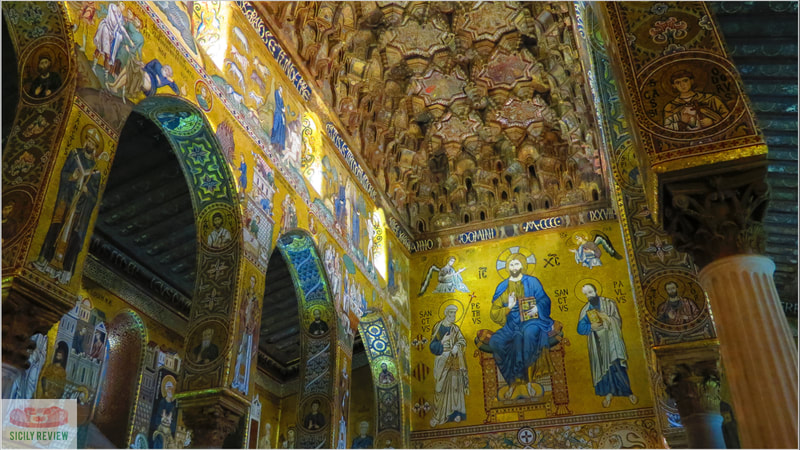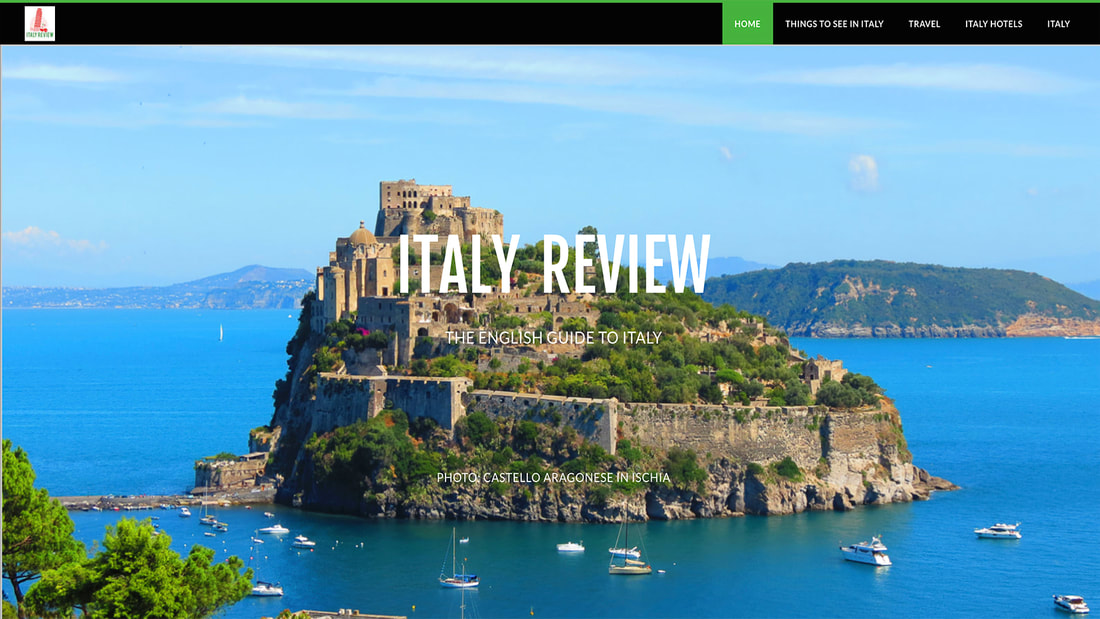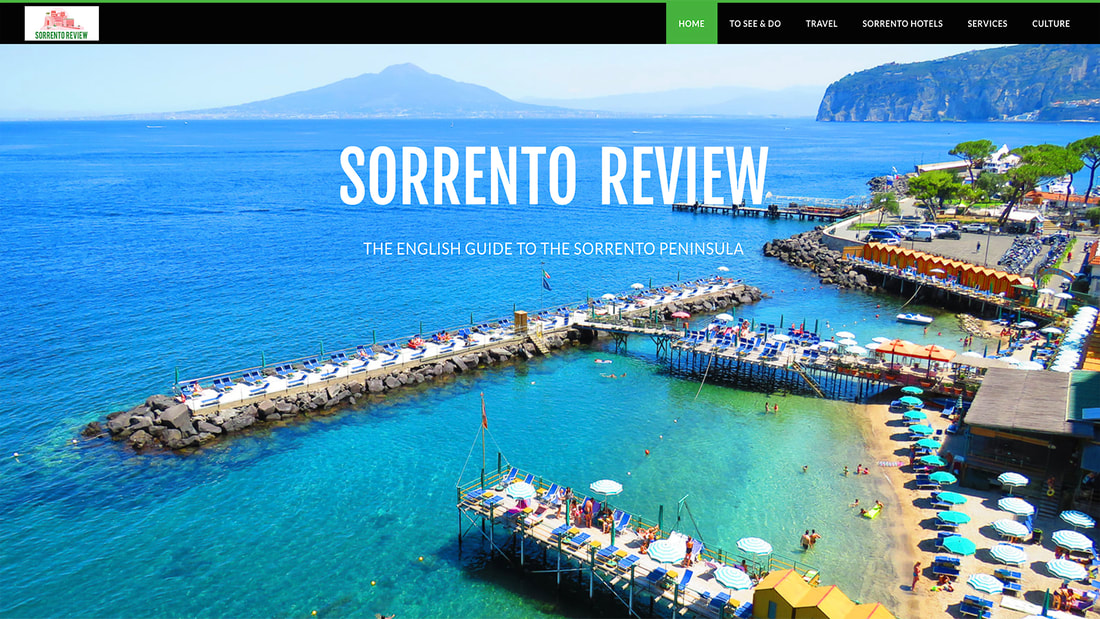Palatine Chapel
Latest update: 9 February 2024
|
The Palatine Chapel is located within the Royal Palace of Palermo which is also known as the Palazzo dei Normani, a reference to the Norman influence on the building which came around 200 years after it was first built by the Saracens in the 9th century.
Very much the star turn, not only in the Royal Palace but in Palermo itself, the Palatine Chapel was created in the twelfth century as the private chapel of King Roger II (Ruggero secondo). |
Related links
Golden glow of the Palatine Chapel
Upon entering the chapel it's commonplace to hear gasps of amazement as the effect of the mosaics greets its visitors. It's something akin to those movie scenes when they open a briefcase and all you see is the golden glow giving away its contents.
There are other places in the world which can boast beautiful mosaic displays but the difference here is that every centimetre of the walls is covered in them and they are of quite an extraordinary beauty.
Centrepiece of the chapel is the image of Christ the Pantocrator, while the rest of the walls are covered in scenes from the bible, beautifully-crafted by the Byzantine artists of the time. Topping off the mosaiced walls is a ceiling that's quite a contrast, created by the Arabs, its intricate wooden carving display a completely skill and the overall effect of the enclosed chapel is quite mesmerising.
Upon entering the chapel it's commonplace to hear gasps of amazement as the effect of the mosaics greets its visitors. It's something akin to those movie scenes when they open a briefcase and all you see is the golden glow giving away its contents.
There are other places in the world which can boast beautiful mosaic displays but the difference here is that every centimetre of the walls is covered in them and they are of quite an extraordinary beauty.
Centrepiece of the chapel is the image of Christ the Pantocrator, while the rest of the walls are covered in scenes from the bible, beautifully-crafted by the Byzantine artists of the time. Topping off the mosaiced walls is a ceiling that's quite a contrast, created by the Arabs, its intricate wooden carving display a completely skill and the overall effect of the enclosed chapel is quite mesmerising.
Palermo Tours
Palermo's UNESCO World Heritage listing
Palermo has UNESCO World Heritage status which is partly due to the Palatine Chapel, but also to a number of other monuments both in the city itself and further afield. Just outside Palermo in the hills overlooking the city is Monreale Cathedral (9 km from Palermo) where similar mosaics are displayed, just on a much larger scale, dazzling in a slightly different way.
The official title of the UNESCO listing is Arab-Norman Palermo and the Cathedral Churches of Cefalù and Monreale, which is a series of nine different local sites. Cefalù Cathedral is 70 kilometres east of Palermo and reachable by road in an hour. Cefalù itself is a busy seaside resort, renowned for its beaches but also for its old town and a visit to the Cathedral is a must for any itinerary of Sicily.
Palermo has UNESCO World Heritage status which is partly due to the Palatine Chapel, but also to a number of other monuments both in the city itself and further afield. Just outside Palermo in the hills overlooking the city is Monreale Cathedral (9 km from Palermo) where similar mosaics are displayed, just on a much larger scale, dazzling in a slightly different way.
The official title of the UNESCO listing is Arab-Norman Palermo and the Cathedral Churches of Cefalù and Monreale, which is a series of nine different local sites. Cefalù Cathedral is 70 kilometres east of Palermo and reachable by road in an hour. Cefalù itself is a busy seaside resort, renowned for its beaches but also for its old town and a visit to the Cathedral is a must for any itinerary of Sicily.
UNESCO Sites close to the Palatine chapel
The remaining sites that make up the UNESCO listing are all in Palermo: on the city's fringes are the Ponte dell'Ammiraglio (Admiral's Bridge) while slightly closer to the centre is the Castello della Zisa.
The remaining four sites are all churches with the incomparable Palermo Cathedral first among those. A short walk from the Cathedral brings you to Piazza Bellini where two more of the UNESCO churches sit next to each other: the tiny Chiesa di San Cataldo with its larger neighbour Chiesa di Santa Maria dell'Ammiraglio, more affectionately known as La Martorana with its own dazzling display of mosaics.
The final site is the Chiesa di San Giovanni degli Eremiti, close to Palermo's famous and raucous Ballarò market.
The remaining sites that make up the UNESCO listing are all in Palermo: on the city's fringes are the Ponte dell'Ammiraglio (Admiral's Bridge) while slightly closer to the centre is the Castello della Zisa.
The remaining four sites are all churches with the incomparable Palermo Cathedral first among those. A short walk from the Cathedral brings you to Piazza Bellini where two more of the UNESCO churches sit next to each other: the tiny Chiesa di San Cataldo with its larger neighbour Chiesa di Santa Maria dell'Ammiraglio, more affectionately known as La Martorana with its own dazzling display of mosaics.
The final site is the Chiesa di San Giovanni degli Eremiti, close to Palermo's famous and raucous Ballarò market.
|
Location: Royal Palace of Palermo
City: Palermo Province: Metropolitan City of Palermo Region: Sicily Built: 9th century Architectural style: Arab Norman Byzantine Close by: Palermo Cathedral, Chiesa Santa Maria dell'Ammiraglio Recommended accommodation: Palazzo Natoli Boutique Hotel |
UNESCO World Heritage Site
Arab-Norman Palermo and the Cathedral Churches of Cefalù and Monreale
Year: 2015
Arab-Norman Palermo and the Cathedral Churches of Cefalù and Monreale
Year: 2015







